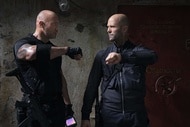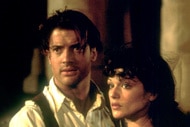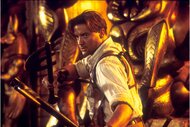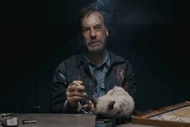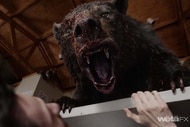Create a free profile to get unlimited access to exclusive videos, sweepstakes, and more!
Weta and Netflix built Umbrella Academy's Pogo with new tech, Ape models, and great tailors
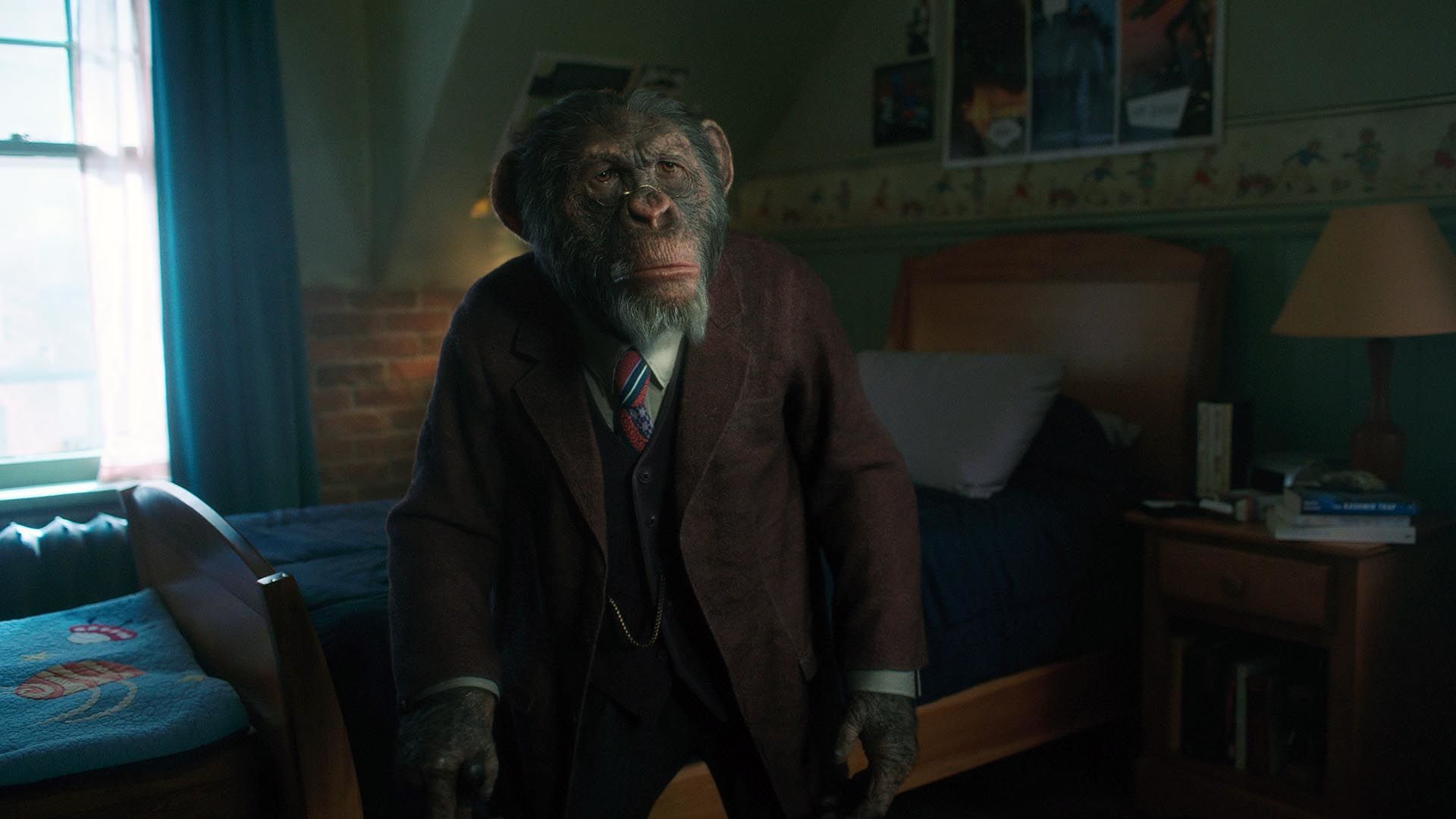
When your movie or TV show calls for a photo-real advanced humanoid chimpanzee, there’s really only one visual effects company you should call. Weta, the New Zealand-based outfit run by Peter Jackson, mastered the art of monkey motion capture and animation over the course of the groundbreaking new Planet of the Apes movies, and the company has been pushing the technology forward ever since. That proved useful when Weta was approached by the producers of UCP and Netflix’s The Umbrella Academy, who were looking for help animating their own humanistic chimp.
In both Gerard Way’s original comic book and its streaming TV adaptation, Pogo is a genetically-enhanced ape who serves as the loyal butler for the Hargreaves family, the dysfunctional superheroes who make up the core of the story’s protagonists. Whereas the simians of the Planet of the Apes trilogies were still primal creatures of the jungle, Pogo is a sophisticated creature, educated, verbose, and dressed in what was at least once an expensive, tailored suit. Weta met both of those challenges with new techniques and new technology.
New Duds
Throughout the show’s first season, Pogo is dressed in a three-piece suit, with a longer jacket flowing over his haunches. Ironically, while much of the success behind the Planet of the Apes effects came from the revolutionary fur rendering, Weta was able to show off a new system it had produced for creating realistic, down-to-the-fiber clothing. In the past, clothes were created with a sort of painted system, but this upgrade allowed for unprecedented customization.
“It's a newer procedural system that allows us to give us more detail into the design and fiber of the cloth,” Weta visual effects supervisor Chris White told SYFY WIRE. “Previously you'd have some kind of textures that you paint, but this allows you to describe each of the fibers and how it actually creates the weave and how that weave apply to the entire outfit.”
The costume department on the show would send actual jackets and clothing that Pogo would have worn had he been portrayed by a real, terrifyingly advanced chimpanzee, and the effects team would examine it under a microscope so that they could describe it to their new system. The VFX team’s shader and a texture painter would work together to input the data, with notes on seams and other irregularities, then reproduce en masse to be used in the rendering of the clothing.
“Satin is different from a canvas — satin's a type of weave more so than it is a fiber, so it's describing it down to that kind of level to make it look realistic,” White said. “One thing they wanted was his clothing should have a character as well. He wants it to look nice and everything, but he's someone who doesn't ever leave the academy, so it was supposed to look slightly not fitted perfectly. It's not like he could get someone to tailor it, and it needs to be worn in places ever so slightly from his anatomy and characteristics.”
This made it not only more real-looking, but also helped determine how light would bounce off his clothing and highlight his features. Weta has for years been adding in little details like fuzz and fabric pilling, and continued to do so with Pogo’s advanced duds, so that the accuracy didn’t end at the outline of his silhouette.
An Ape Among Men
When Umbrella Academy showrunner Steve Blackman sent the character brief to Weta and Netflix’s VFX supervisor Everett Burrell, he explained that Pogo was made from the same serum that made Luther, one of the Hargreaves children, more apelike. The serum transformed Pogo into something a bit more human, requiring a chimp with better posture and other sapien-esque characteristics.
“Pogo was slightly different in that because was more human, he was more upright, and his speaking role was more refined than you'd had with Caesar or any of those other apes,” White said. “So spending a fair amount of attention on his tongue shapes and mouth shapes and speaking was important for the show.”
As a more refined chimp, Pogo had to be animated differently than those in the Planet of the Apes trilogy. On those movies, they used motion capture to film the actors portraying apes, and because those actors were also providing the voices to the characters, Weta was able to get all its VFX artists needed on set, a one-stop shop for monkey performance data. But Pogo required two actors to get the job done: Ken Hall provided Pogo’s basic movements on set as well as the eyelines for the rest of the cast, while Adam Godley provided the voice — and, crucially, the facial inspiration.
Unlike the Apes trilogy, there was no true motion capture involved. Hall still wore the skintight black suit with sensors that monkey forebearer Andy Serkis helped make so commonplace, but his movements didn’t get directly ported into the character that would wind up on screen. Weta’s animators used his work as inspiration when building and maneuvering the Pogo model, but the other half of the equation made anything more exact impossible.
Godley was also filmed while delivering Pogo’s lines, as his mug was equally as important as his voice.
“We needed to pull in all Adam’s nuances, expressions, his match with his voice,” White explained, “but then we also had to reanimate the body to conform to what Adam had done with his face and with his delivering of the scene.”
Of course, it couldn’t be an exact one-to-one match to either actor, because human faces do not quite mirror those of apes, so even Godley’s face was just an inspiration for Pogo. Most prominently, you can see Godley’s deep-set eyes in Pogo’s face, his long frown at the bottom of the snout. Given that apes cannot yet talk with the eloquence or pronunciation skills of humans, Weta also had to manipulate the Pogo model’s face in other small ways, including adding nasolabial folds in-between the nose and mouth, as well as shapes around the edge of its mouth.
“We altered his head shape to be more human; particularly altering his eyes to have less of a chimp look and more of a human look,” White said. “Softer and more compassionate was the goal. We knew Pogo was going to have some big emotional scenes and we needed to sell his performance with the eyes.”
There were several elements to consider, from obvious ones like the size of the eyes to aspects one might not even be able to pinpoint, even when recognizing something is amiss. Things like the moisturize in the meniscus lining the eyes to the way that light reflects off their surface. Too big an illuminated highlight, it looks unnatural; too small, the eyes look piercing. It was a careful balance between human and ape, just like everything else about the character.
UCP and SYFY share a parent company, NBCUniversal.


